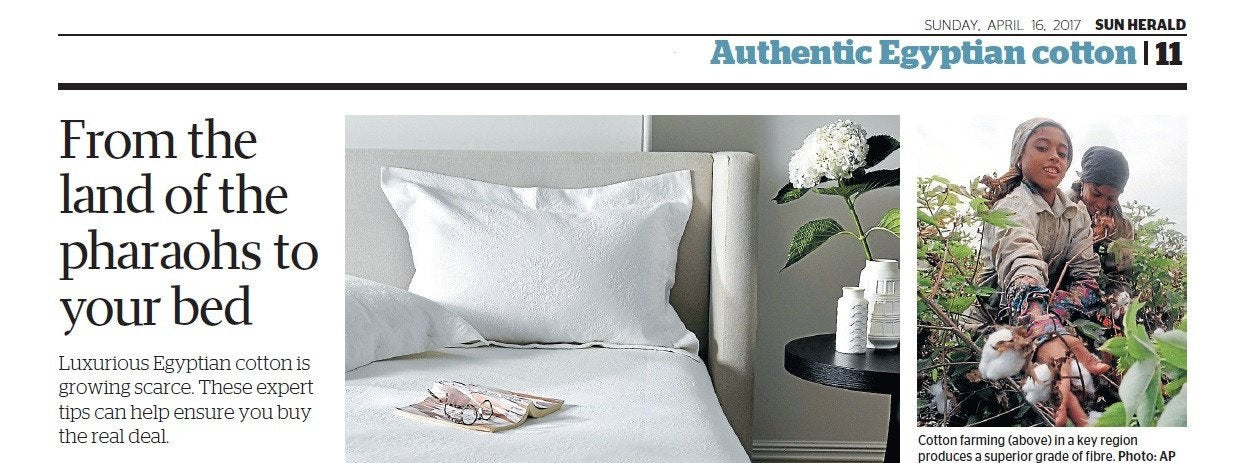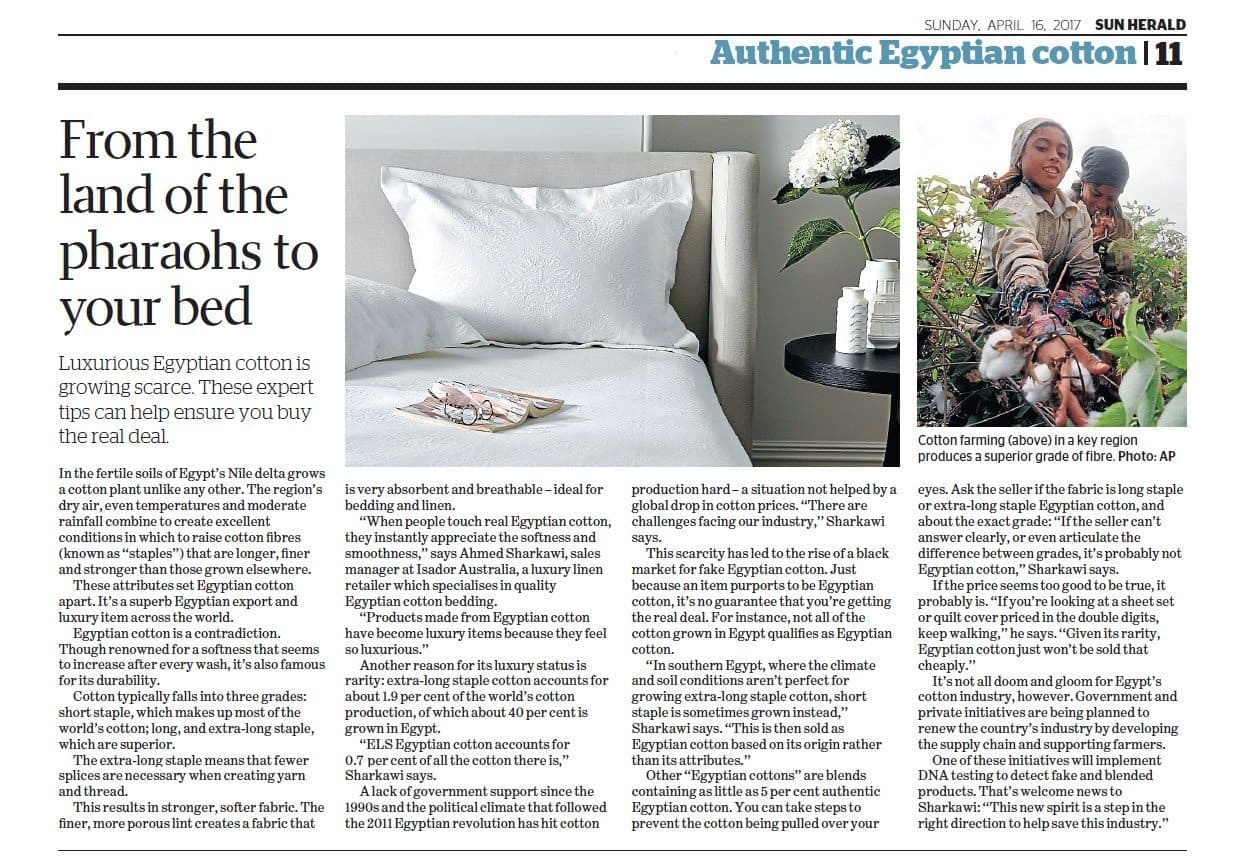ON AUTHENTIC EGYPTIAN COTTON; INTERVIEW WITH THE SUN HERALD

The following is the text of an article/interview that was published in the Sun Herald on the 16th of April 2017:
—
Luxurious Egyptian cotton is growing scarce. These expert tips can help ensure you buy the real deal.
In the fertile soils of Egypt’s Nile delta grows a cotton plant unlike any other. The region’s dry air, even temperatures and moderate rainfall combine to create excellent conditions in which to raise cotton fibres (known as ‘‘staples’’) that are longer, finer and stronger than those grown elsewhere.
These attributes set Egyptian cotton apart. It’s a superb Egyptian export and luxury item across the world.
Egyptian cotton is a contradiction. Though renowned for a softness that seems to increase after every wash, it’s also famous for its durability.
Cotton typically falls into three grades: short staple, which makes up most of the world’s cotton; long, and extra-long staple, which are superior.
The extra-long staple means that fewer splices are necessary when creating yarn and thread. This results in stronger, softer fabric. The finer, more porous lint creates a fabric that is very absorbent and breathable – ideal for bedding and linen.
‘‘When people touch real Egyptian cotton, they instantly appreciate the softness and smoothness,’’ says Ahmed Sharkawi, sales manager at Isador Australia, a luxury linen retailer which specialises in quality Egyptian cotton bedding.
‘‘Products made from Egyptian cotton have become luxury items because they feel so luxurious.’’
Another reason for its luxury status is rarity: extra-long staple cotton accounts for about 1.9 per cent of the world’s cotton production, of which about 40 per cent is grown in Egypt.
‘‘ELS Egyptian cotton accounts for 0.7 per cent of all the cotton there is,’’ Sharkawi says.
A lack of government support since the 1990s and the political climate that followed the 2011 Egyptian revolution has hit cotton production hard – a situation not helped by a global drop in cotton prices. ‘‘There are challenges facing our industry,’’ Sharkawi says.
This scarcity has led to the rise of a black market for fake Egyptian cotton. Just because an item purports to be Egyptian cotton, it’s no guarantee that you’re getting the real deal. For instance, not all of the cotton grown in Egypt qualifies as Egyptian cotton.
‘‘In southern Egypt, where the climate and soil conditions aren’t perfect for growing extra-long staple cotton, short staple is sometimes grown instead,’’ Sharkawi says. ‘‘This is then sold as Egyptian cotton based on its origin rather than its attributes.’’
Other ‘‘Egyptian cottons’’ are blends containing as little as 5 per cent authentic Egyptian cotton. You can take steps to prevent the cotton being pulled over your eyes. Ask the seller if the fabric is long staple or extra-long staple Egyptian cotton, and about the exact grade: ‘‘If the seller can’t answer clearly, or even articulate the difference between grades, it’s probably not Egyptian cotton,’’ Sharkawi says.
If the price seems too good to be true, it probably is. ‘‘If you’re looking at a sheet set or quilt cover priced in the double digits, keep walking,’’ he says. ‘‘Given its rarity, Egyptian cotton just won’t be sold that cheaply.’’
It’s not all doom and gloom for Egypt’s cotton industry, however. Government and private initiatives are being planned to renew the country’s industry by developing the supply chain and supporting farmers.
One of these initiatives will implement DNA testing to detect fake and blended products. That’s welcome news to Sharkawi: ‘‘This new spirit is a step in the right direction to help save this industry.’’

